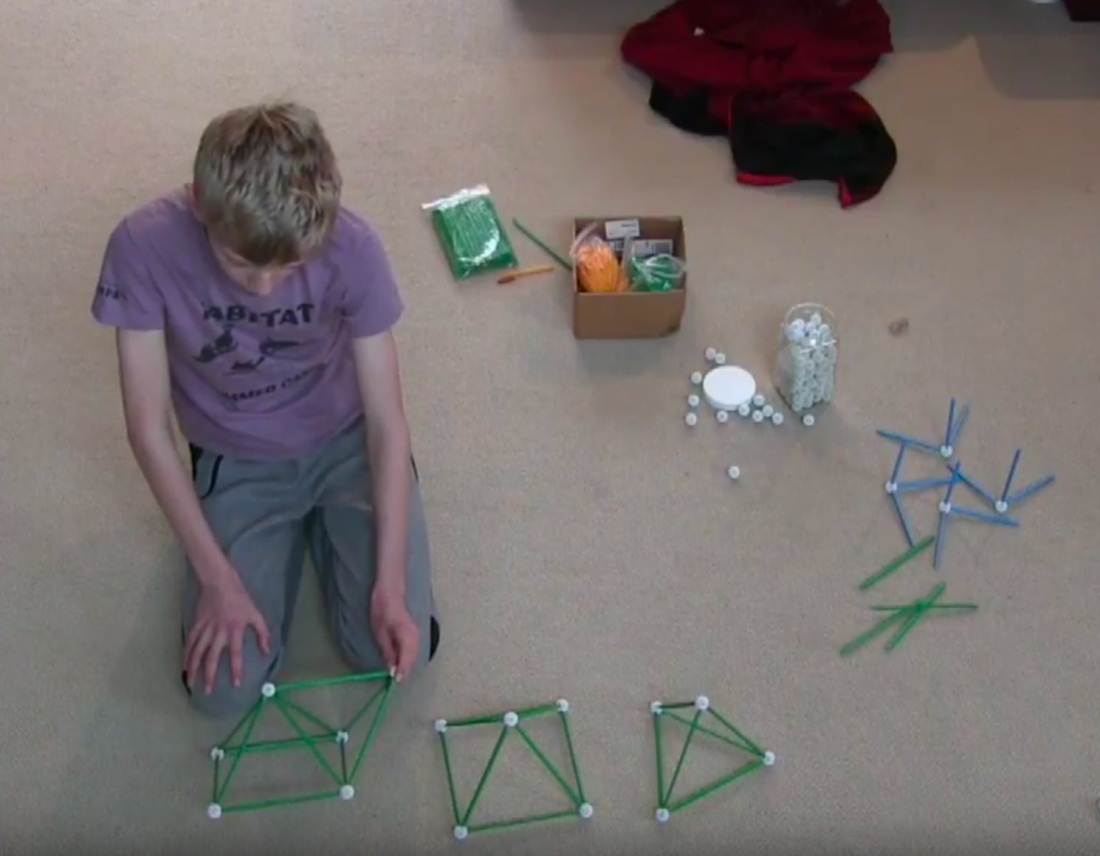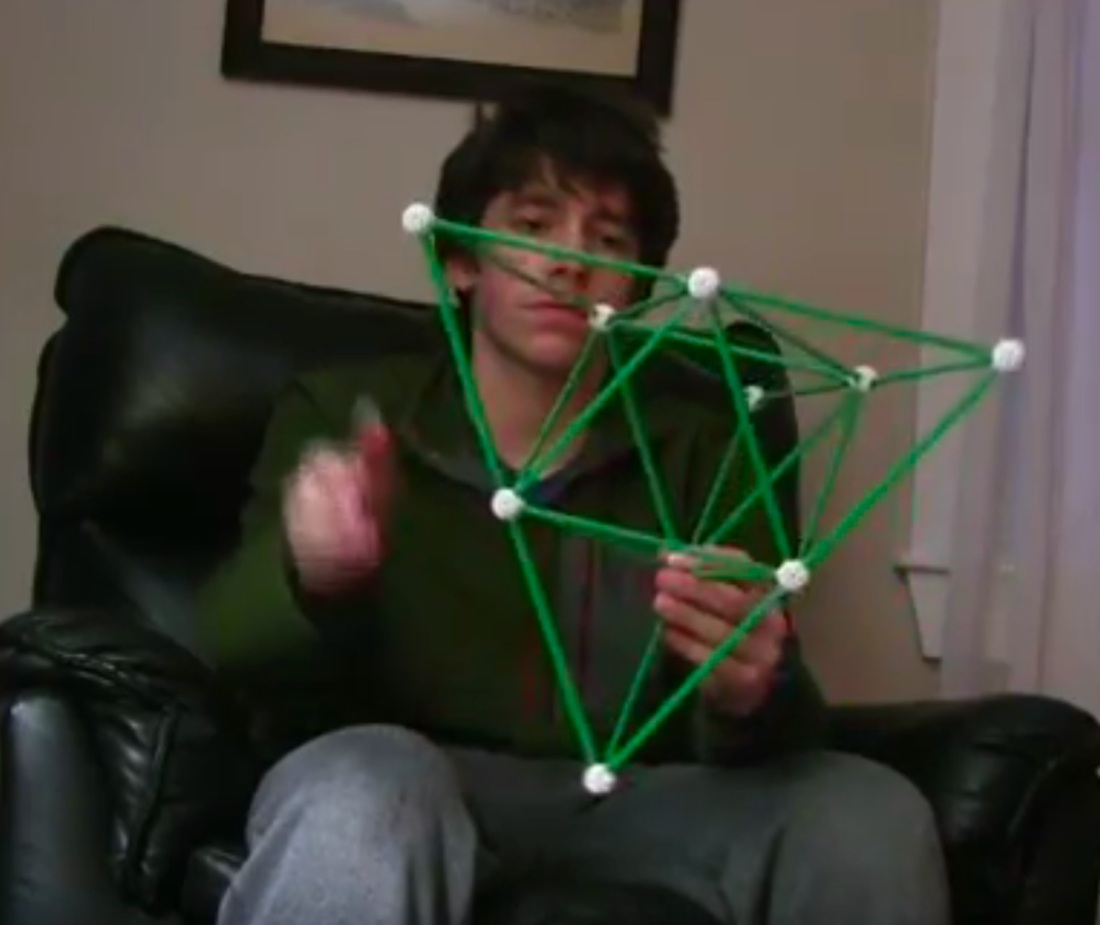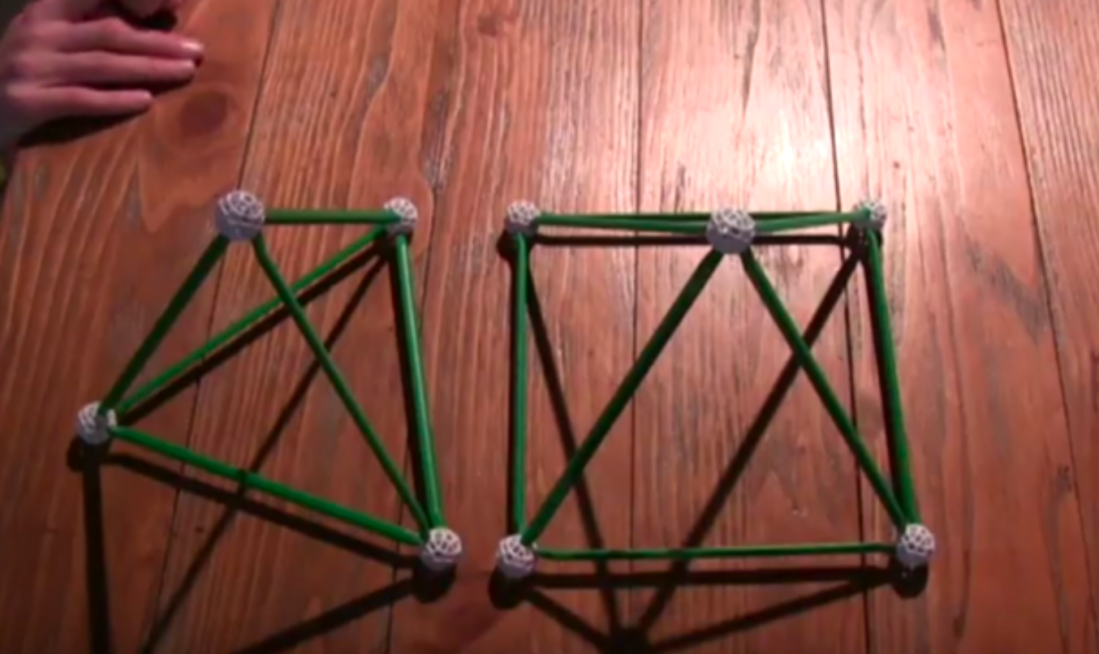[had to write this in more of a hurry than usual as 30 min of my morning was spent fishing for a dropped retainer that fell through a gap in our bathroom floor . . . . so sorry for the quite write up, but this project is a really fun way to get to hear a younger kid think about 3d geometry]
There were two really nice math ideas shard on twitter this week and I had no idea that they were related.
The first was a famous problem shared by Alexander Bogomolny:
I did a fun Zometool project with my younger son using the problem:

That project is here:
Alexander Bogomolny shared one of my all time favorite problems this morning
Then came Patrick Honner’s appearance on the My Favorite Theorem podcast:
I shared some of the ideas from the podcast and subsequent twitter follow up with my older son:

Sharing Patrick Honner’s My Favorite Theorem appearance with kids
Today – with just my younger son – I looked at a surprising connection between these two projects. We started by reviewing the Pyramid / Tetrahedron problem and then trying to guess the relationship between the volume of the two shapes.
Sorry that the lighting is so awful in these videos – unfortunately I only noticed after we were done.
Next I showed him the larger Tetrahedron with the inscribed octahedron. Although the main point of today’s project wasn’t Varignon’s theorem, I explained the theorem and asked my son to find some of the inscribed squares.
This connection was pointed out by Graeme McRae in this tweet:
At the end of the last video my son was starting to think about how volume scales. Since that’s an important point for this project I wanted to have all of those thoughts in one video.
It is interesting to hear how he tries to reconcile his mathematical thoughts about the volume of the two shapes with what he sees right in front of him.
Finally, we wrapped up by trying to find the relationship between the volume of the small tetrahedron and the volume of the pyramid.
I’m happy that my son is not convinced that the mathematical scaling arguments are correct. I can also say that holding these two objects in your hand it really does not look like the pyramid has twice the volume. Can’t wait to follow up on this.
